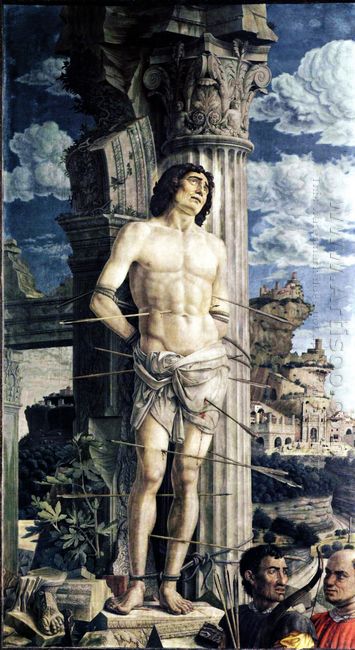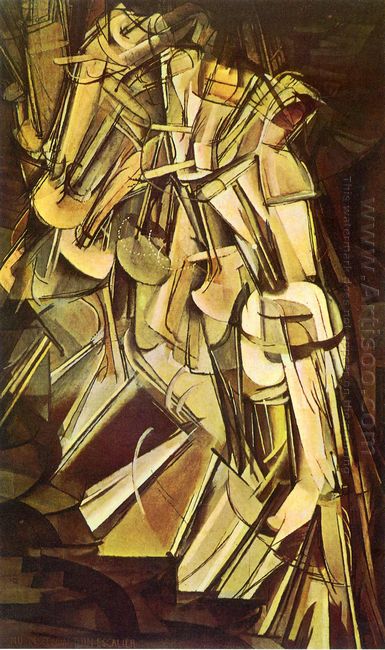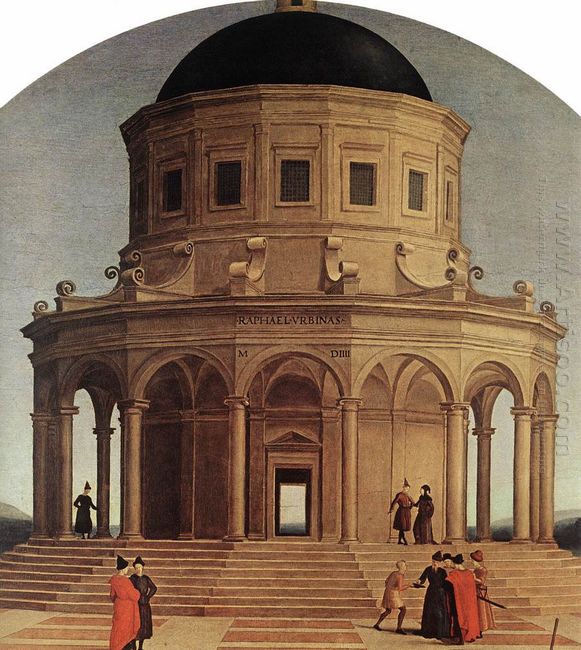Andrea Mantegna was a prolific church wall painter. His paintings reflected the typical style of the northern school in the second half of the fifteenth Century. Here San Sebastian was one of his most representative works.
San Sebastian was a Roman martyr in the biblical legend. He once preached in the Rome army and was arrested by the Roman emperor who was against the Christian and commanded to shoot him with arrows. In the fifth Century B. C. when Christianity was not allowed to exist, it was very cruel that Rome's rulers treated Christian slaughter. On the eve of the Rome to the total collapse, more than one religious martyr died for this except San Sebastian. And this action was often seen in the history. So it was not difficult to understand that San Sebastian was the saint of religious legends. In the fifteenth century, the church also repeatedly used this theme. And the artist took advantage of this character to recognize the rights of the people and their prey, and Mantegna earlier made a try. Here the martyr was tied to a symbol of Roman Triumphal Arch, and people had been killed with arrows. One arrow was from the martyr's chin injection forehead, showing that arrows were shooting from all sides. The pillar behind was Corinth, seeming to explain the background building was close to the public buildings in Rome before fifth century. The artist wanted to through these details show a real historical environment, but due to the perspective principle limitations, the screen background and the characters did not appear coordination. If taking this painting as a historical theme to expose the ancient tyranny in history, it may enable us to produce more reverence to the Mantegna art.
At that time, in addition to the mural form, there was also form on the board. This was painted on wood and made from 1455 to 1460. Mantegna was the foster of Italian famous archaeologist Silk Val Gu Ne. Under the influence of this scholar, the painter developed a strong interest to the historical and ancient artifacts, which was another important aspect of humanistic artists’ intelligence.





